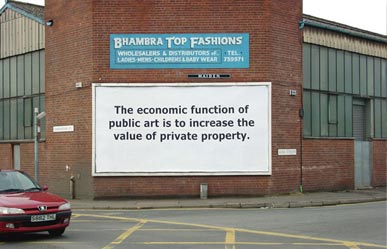Placemaking investments by developers are usually about positive economic returns
The Post has an article ("Washington’s top real estate developer is painting murals in your neighborhood. Is it art or marketing? Or both?") wondering if a real estate developer is funding murals around a property to lure tenants.
Of course they are.
That's what capitalism is all about.
Placemaking for the most part is "an amenity" just like a rooftop deck that makes a property more attractive relative to other properties.
Developers will invest in such amenities as long as the marginal economic return from the investment is positive. If it is not, they won't make the investment/spend the money.
For the most part, these are "business decisions," not decisions based on noneconomic phenomenon such as "values," although that isn't entirely true. Portfolio investors understand that investments in the property that make it more attractive pay off in increasing returns over the long time. Still...
 The Economic Function, Billboard text at the corner of Corporation Street & Alma Street, Sheffield S3. 6 April - 20 April 2004.
The Economic Function, Billboard text at the corner of Corporation Street & Alma Street, Sheffield S3. 6 April - 20 April 2004. The work 'The economic function of public art is to increase the value of private property' sets out to question the function of art in the public realm within the economic regeneration of post industrial cities. The image will accompany a text in a journal by Public Art Forum to be published later this year. This work is the second part of a commission for Public Art Forum by Hewitt & Jordan.
Also see:
-- "Arts, culture districts, and revitalization
-- "Integrating citizen residents into "business" improvement districts" - this piece discusses "business improvement districts" and how resident interests are under-represented within such organizations, which have de facto control of public space matters in many mixed use districts
Note also that in Greensboro in NovemberJack Becker, founder of Forecast Public Art, a nonprofit addressing public art matters, and publisher of the superlative journal, Public Art Review, lectured on "the complex role of public art."
His talk is online, but I haven't had a chance to watch it yet.
Labels: capital, public art, real estate development, real estate financing, urban design/placemaking



0 Comments:
Post a Comment
<< Home